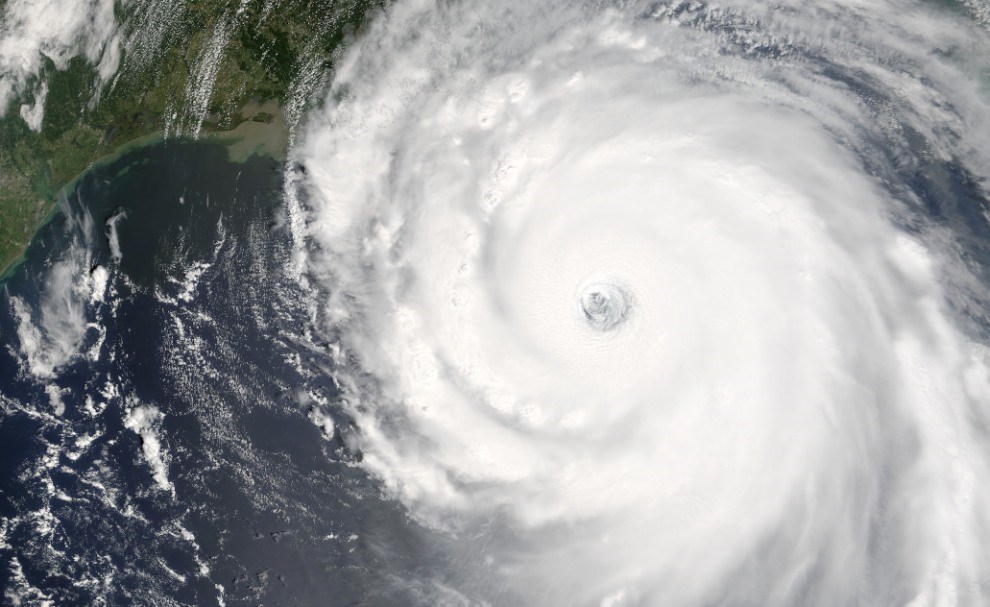Part of a series of articles titled Coastal Geomorphology—Tropical Storms.
Previous: Tropical Storm Development
Next: Storm Surge
Article

NASA, Jeff Schmaltz, MODIS.
At the center of a hurricane is the eye, which typically develops when sustained winds reach approximately 74 miles per hour (119 kph). The eye of a hurricane is relatively calm. It’s usually sunny with a light breeze blowing between 10 and 15 miles per hour (16 and 24 kph). The size of the eye can vary but is generally 20–40 miles (32–64 km) across.
Surrounding the eye is the eyewall, which is the area of strongest winds, intense thunderstorms, and heavy rain. Imagine experiencing a hurricane: you withstand the first rotation of the eyewall and the eye passes over. It’s sunny, the winds are calm, and birds are in the air; it seems the storm has passed. Then the eyewall approaches from the opposite direction, and the chaos starts all over again.
Outward from the eyewall are rainbands—concentric bands of intense rain and wind interspersed between areas of less energy. Rainbands are the areas where tornadoes form. If you were to travel outward from the eye in a straight line toward the edge of a hurricane, the intensity of the conditions would change as you passed through the rainbands. Between these bands of intense weather, there may be very little rain or wind.
Part of a series of articles titled Coastal Geomorphology—Tropical Storms.
Previous: Tropical Storm Development
Next: Storm Surge
Last updated: June 4, 2019